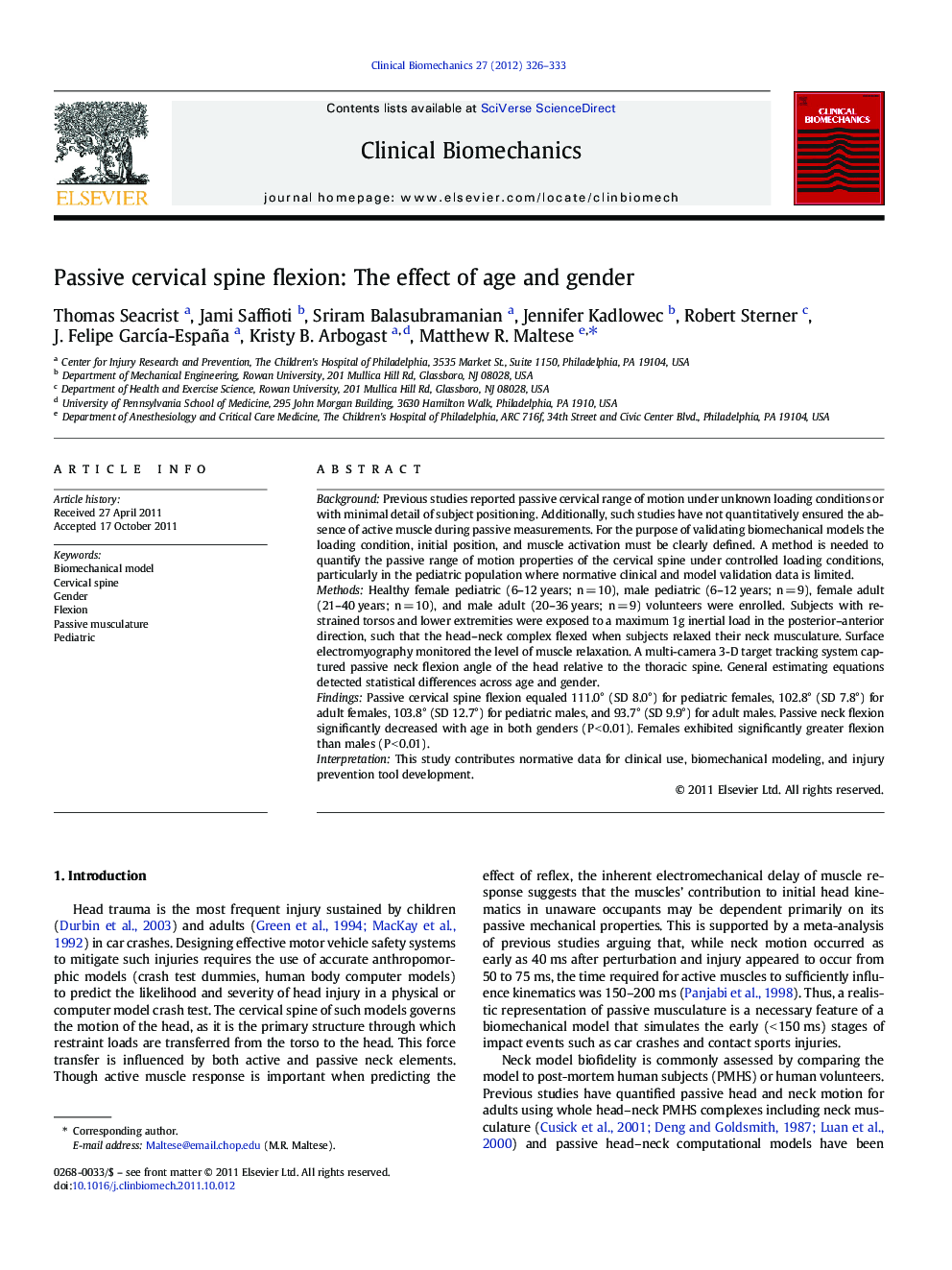| Article ID | Journal | Published Year | Pages | File Type |
|---|---|---|---|---|
| 6205126 | Clinical Biomechanics | 2012 | 8 Pages |
BackgroundPrevious studies reported passive cervical range of motion under unknown loading conditions or with minimal detail of subject positioning. Additionally, such studies have not quantitatively ensured the absence of active muscle during passive measurements. For the purpose of validating biomechanical models the loading condition, initial position, and muscle activation must be clearly defined. A method is needed to quantify the passive range of motion properties of the cervical spine under controlled loading conditions, particularly in the pediatric population where normative clinical and model validation data is limited.MethodsHealthy female pediatric (6-12 years; n = 10), male pediatric (6-12 years; n = 9), female adult (21-40 years; n = 10), and male adult (20-36 years; n = 9) volunteers were enrolled. Subjects with restrained torsos and lower extremities were exposed to a maximum 1g inertial load in the posterior-anterior direction, such that the head-neck complex flexed when subjects relaxed their neck musculature. Surface electromyography monitored the level of muscle relaxation. A multi-camera 3-D target tracking system captured passive neck flexion angle of the head relative to the thoracic spine. General estimating equations detected statistical differences across age and gender.FindingsPassive cervical spine flexion equaled 111.0° (SD 8.0°) for pediatric females, 102.8° (SD 7.8°) for adult females, 103.8° (SD 12.7°) for pediatric males, and 93.7° (SD 9.9°) for adult males. Passive neck flexion significantly decreased with age in both genders (P < 0.01). Females exhibited significantly greater flexion than males (P < 0.01).InterpretationThis study contributes normative data for clinical use, biomechanical modeling, and injury prevention tool development.
